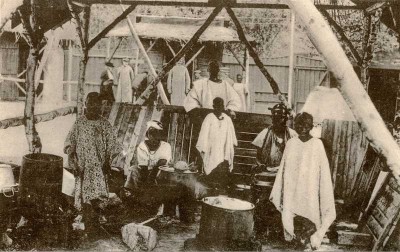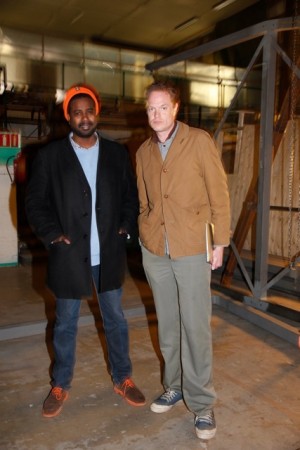An artists’ project in Oslo’s Frogner Park has set off a global wave of hatred directed at Norway that the artists themselves claim is the result of a huge misunderstanding. It all involves their efforts to recreate, as part of Norway’s bicentennial celebrations this year, an exhibit at the park that was mounted as part of centennial events 100 years ago.

That’s when, in an age before mass media and long before the dawn of the Internet, it was common in Europe and elsewhere to feature far-off exotic nations at large public expositions. Just like the so-called Kongolandsbyen (Congo village) that’s now being recreated by artists Mohamed Ali Fadlabi and Lars Cuzner.
They’re amazed and aghast over a widespread social media frenzy that has, in their view, completely misinterpreted their attempt to recreate the exhibit of a Congolese village in the Frogner Park that attracted huge crowds in Oslo 1914. It involved the portrayal of a village featuring around 80 people from Senegal who lived in it for the duration of the exhibition. The idea then was to spread knowledge of how people lived in areas of the world that the vast majority of Norwegians at the time were unlikely to ever visit.

Artists Fadlabi and Cuzner have been busy in recent weeks putting the final touches on their 2014 version of the exhibition from 100 years ago, called “European Attraction Limited” and due to open May 15. They’ve also advertised for people willing to live and be on display in the village for the duration of its three-month run starting this summer. Public outcry over their project from not least Kenya and other African countries suggests that may be difficult.
“Africans being exhibited like animals in Norway’s human zoo!” tweeted one of the many objecting to the art project. “SHOCKING!” Added another: “Being BLACK is not a Disease! Being BLACK is NOT a curse! We don’t deserve to be Kept in Zoos! We are NOT Animals!”
Though a stream tagged “#SomeoneTellNorway,” the objections have gone viral but are based on ignorance, according to Fadlabi, an artist living in Oslo who came to Norway as an asylum seeker from Sudan. He since has held exhibitions of his art in Oslo, Bonn, Stockholm, Khartoum and Roubaix and also has designed album covers for several leading Norwegian musicians. Cuzner is a Swedish artist living in Oslo.
“I tried to find the source (of all the objections to their Frogner Park project),” Fadlabi told Norwegian Broadcasting (NRK) this week. “It looks like it all started with a blog that wildly distorted what we’re really doing. They’re trying to make it look like we’re putting Africans in cages, and that wasn’t done even back in 1914.”
He thinks it’s ironic that many of the comments flying on social media are themselves racist in nature. “And that’s exactly one of the issues we’re trying to raise with the project,” Fadlabi told NRK, adding rhetorically “Can you be racist even if you’re black? I mean, they’re writing terrible things about Norway!” He thinks many of the comments themselves are based on ignorance and prejudice.
Fadlabi nonetheless welcomes the debate, but wishes it was informed. “We had some similar reactions when we first launched the project, but we see that the critics fall silent when they learn more about what we’re actually doing.”
The project he and Cuzner are mounting is meant to address such issues as racism and fear of foreigners. They received a grant of NOK 800,000 (USD 133,000) from the Norwegian public art agency KORO and want 80 persons to live in their “Congolese village,” in 15 homes being built from local birch trees. They initially wanted occupants from Senegal, like those who populated the exhibition 100 years ago, but now they say skin color of potential villagers on display is not important. “We just need volunteers willing to live in our human zoo,” they wrote on their website in an international call for extras to fill the roles.
Perhaps that’s what attracted so much international reaction, but the artists’ are unfazed. Fadlabi’s advice to his critics in Kenya, for example: “They need to read a bit more about the project before they start a Twitter trend.”
newsinenglish.no/Nina Berglund

